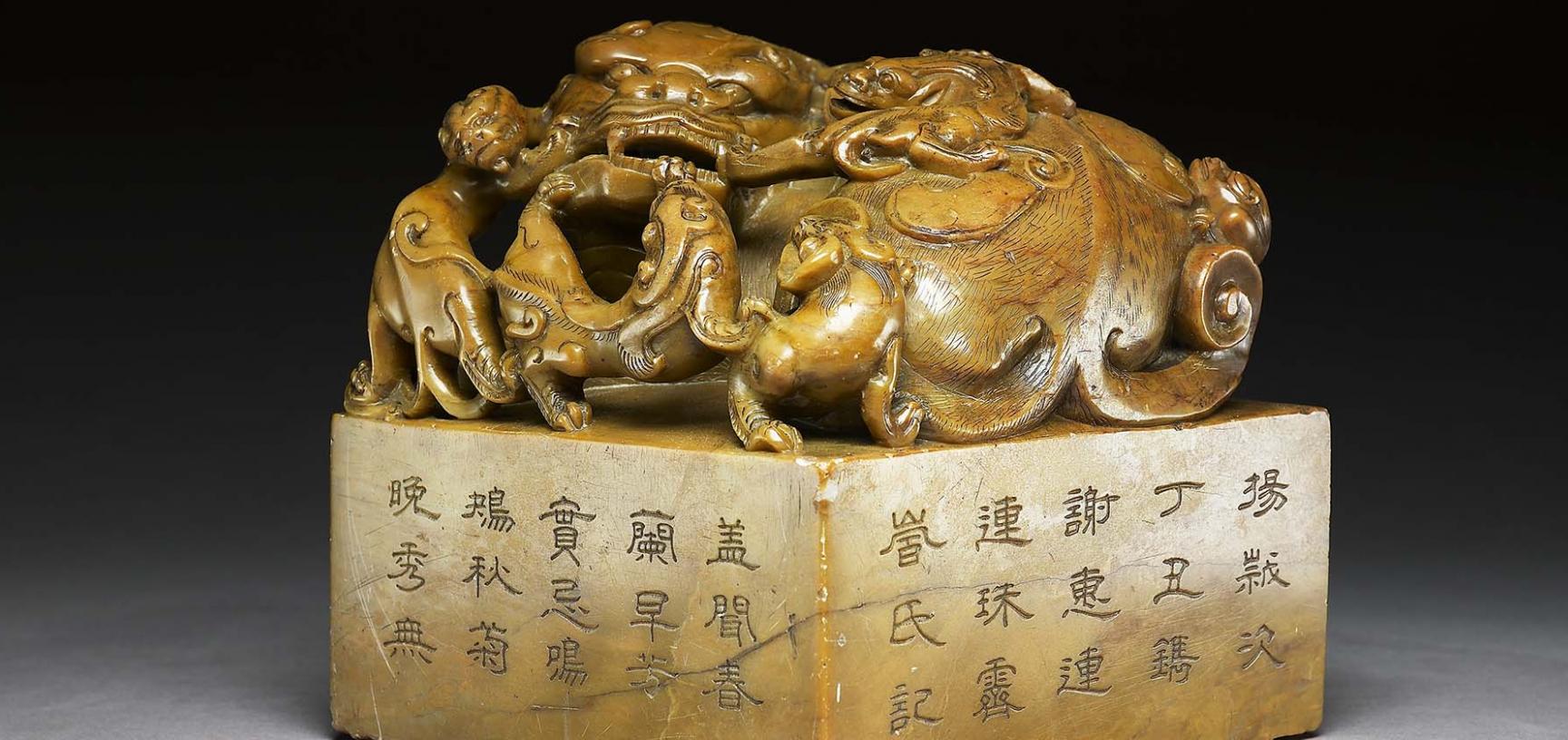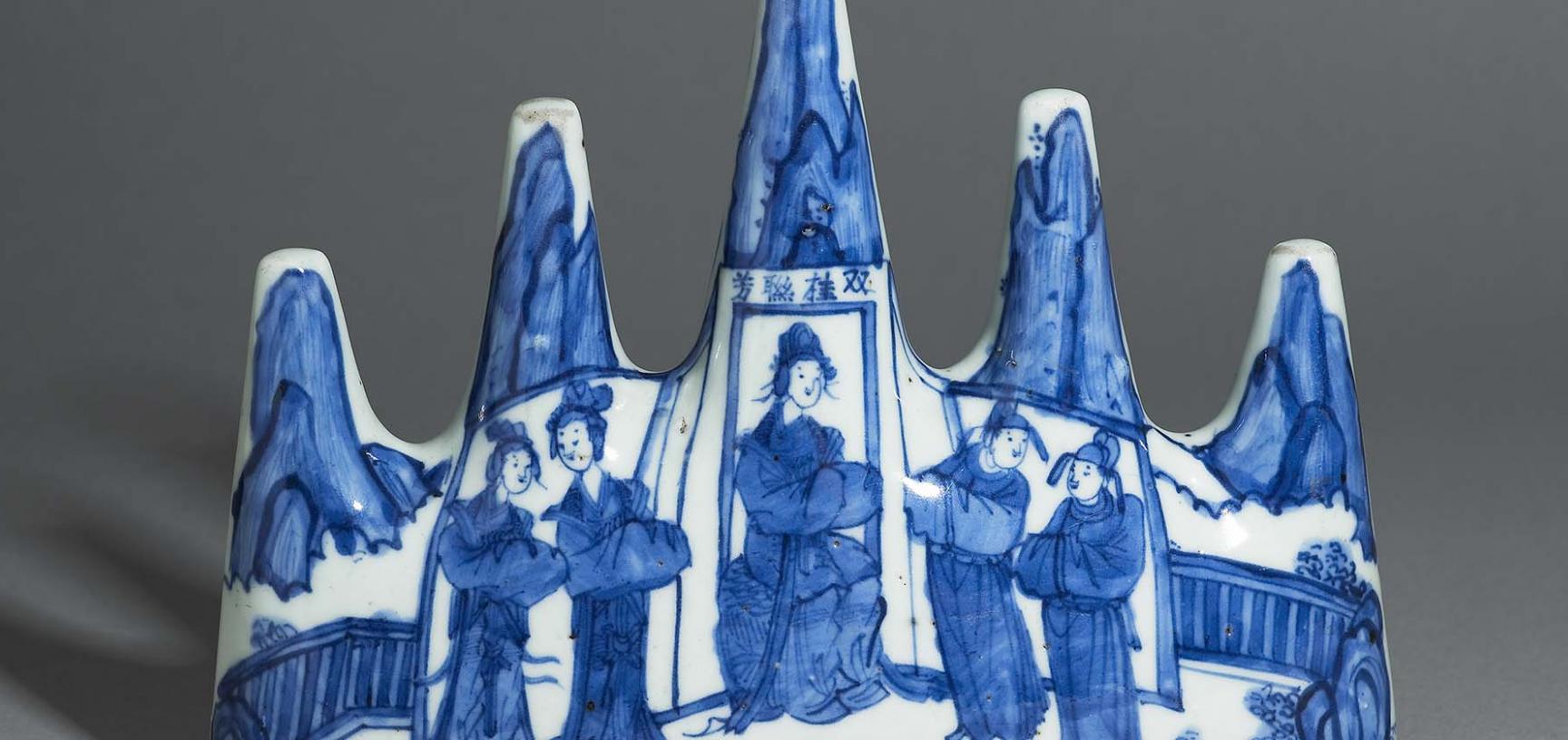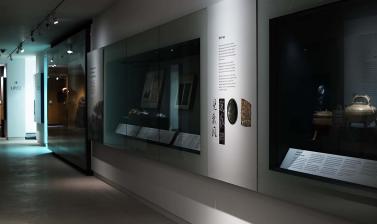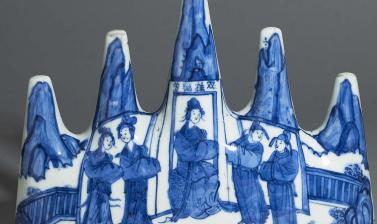CHINA TO AD 800
This gallery explores more than 3,000 years of Chinese history and culture through surviving artefacts
The importance of writing to Chinese society from the 15th century BC is a key theme. A wall case devoted to the topic charts the development of writing in China from its earliest inscriptions on animal bones to literary and administrative texts written on stone, bamboo, silk and paper. Bronze, ceramic and jade artefacts from pre-Dynastic China through the Shan, Zhou and Han dynasties are displayed in cases on the opposite wall.
The low cabinet at the end of the gallery is devoted to calligraphy, and the tools connected with it, up to modern times. Brushes, inkstones, brush rests, seals and water pots are on display – many of these are works of art in their own right such as the exquisite 18th-century silver and porcelain water pot in the form of a lychee spray.
Chinese burial practices are also highlighted as many of the objects on display in the gallery have been recovered from tombs. Ceramic figures from the Han and Tang dynasties show the development of a belief in the afterlife, where the dead would be buried along with representations of items from daily life to help them in the next life. Tang burial goods from the 7th and 8th centuries are displayed in the cabinet on your left as you walk through to the India gallery and depict exotic elements of the Silk Road such as camels.
The Ashmolean houses the largest collection of early greenware ceramics outside of China thanks to Sir Herbert Ingram’s gift of his remarkable collection of Chinese and Japanese art to the Museum in 1956. You can see many greenware items on display here and in 'China from AD 800' on the second floor.











